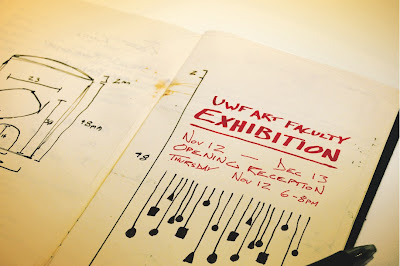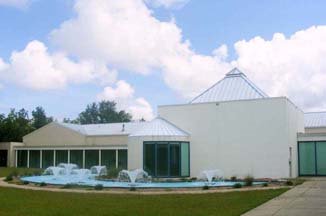UWF ART Faculty Exhibition

The annual UWF Art Faculty exhibition showcases new works of contemporary art from Department of Art faculty and surveys the breadth of work currently produced by UWF Art professors. It is an opportunity for students and community members to gain a sense of the professional work produced by the department.
The UWF Art Faculty exhibition features the work of visual art professors Jim Jipson, Valerie George, Joseph Herring, Amy Ruddick, Dan Kelleher, John Markowitz, Sally Miller, Greg Saunders, Lyda Toy, Marzia Prendergast and professor emeritus Hank Heuler. The exhibition also includes the display of new publications by art historian Barbara Larson and the work of four new visual art faculty members: Thomas Asmuth, Gary Batzloff, Gina Cestaro and Adam Shiverdecker.
Gestural Pop

With Artists
Rachel Jones & David Sullivan

Formally trained painters, Rachel Jones and David Sullivan negotiate the complex relationship between Abstract Expressionism and Pop Art; two major painting movements of the 20th century. Jones' murky figurative pastorals coupled with Sullivan’s neon color palette and inventive use of materials blur the styles of Abstract Expressionism and Pop Art. The formal and conceptual issues presented in the exhibition, Gestural Pop consistently challenge contemporary artists working today.
Projected Landscapes

Statement from the Curator:
The 2009-2010 season presents a series of exhibitions featuring the visual and conceptual interplay between sets of two artists. For each exhibition, the coupled artists were chosen for their differing motivations and varying use of materials. These differences are to act as complimentary forces, which work to create a stimulating discourse between the artists and viewers within the transitory space of the gallery. The artists are encouraged to converse before, during and after the installation of their work in the gallery. This continuing dialogue, facilitated by the gallery space, is intended to form an active platform upon which dynamic and engaging explorations of contemporary art can develop.
Projected Landscapes: A Collaborative Exhibition
The technological boom of the 21st century has transformed social and aesthetic environments. As a result, artists today are re-addressing and redefining “landscape” much like their 19th century counterparts who explored, through the traditional genre of landscape painting, man’s relationship to nature in the wake of the Industrial Revolution.
In Projected Landscapes, contemporary artists, Courtney Egan and David Webber, explore differing iterations of “landscape” through atmospheric digital projections and video installations. For the artists, the idea of “landscape” is not one of escapism as it was for their 19th century predecessors, but of evaluation. Egan's use of technology in her work supports an observational investigation of her personal environment in New Orleans, Louisiana. Through digital media, she explores the collisions of human invention and organic processes. Egan uses technology to visually slow time, capture and depict erosion, death and the inevitable transformation of landscape.
Contrastingly, Webber turns inward and uses technology to map the shadowy terrain of memory and the subconscious. He uses video as a means to visually record his recollections and then replay them as our subconscious replays memories in an effort to form and define the self. Through these reflections, Webber’s work questions the accuracy of our memories and explores the way these fabrications and truths interact to form identity.







